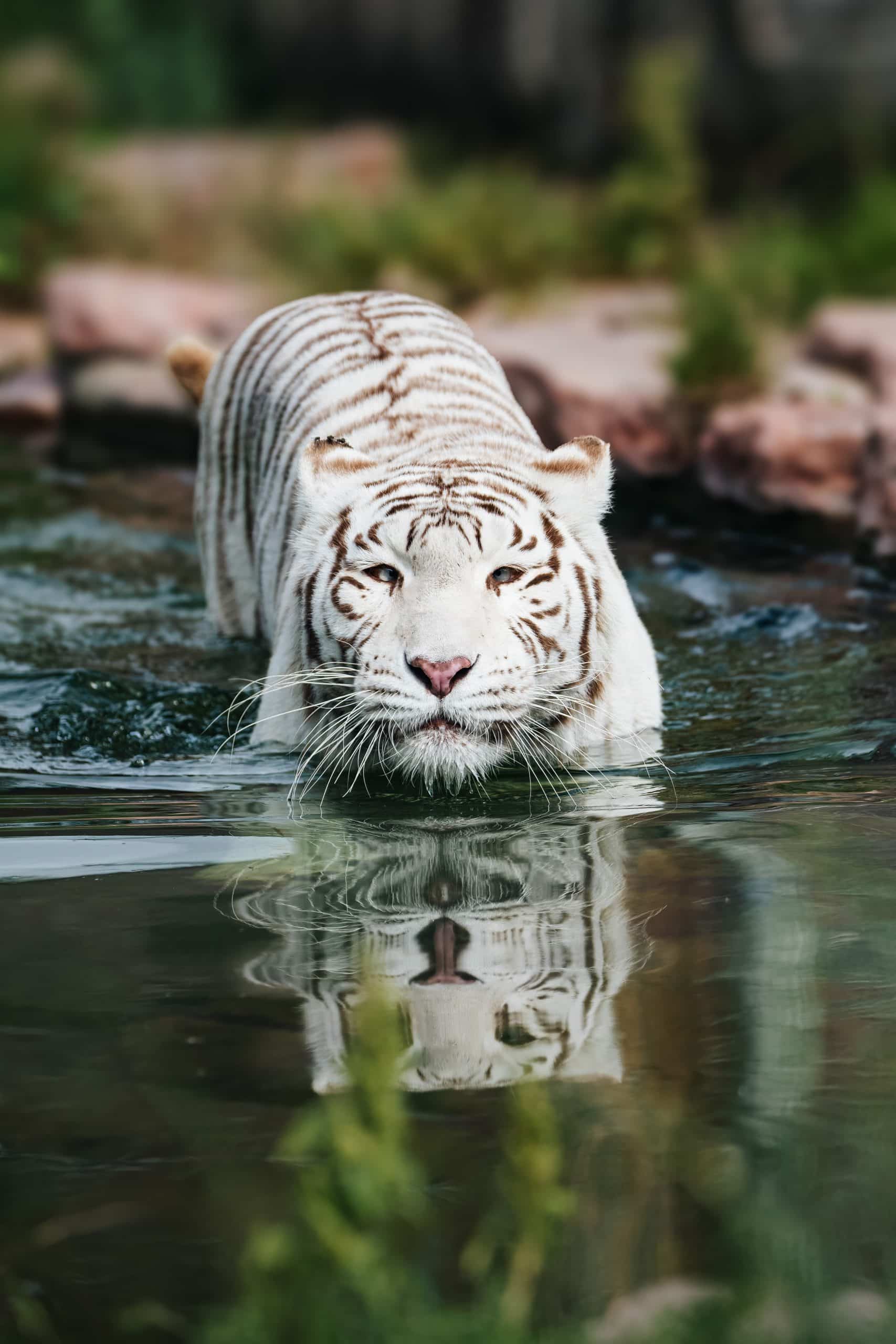The red-gold coloring of the tiger’s coat with the typical black striping gives one the feeling that it is distinctive and impossible to miss. However, this coloring perfectly camouflages and protects it in its natural environment of shady forests and primeval forests. The tiger has a muscular body with strong front limbs. The tail reaches up to half the length of its body. Its coat color varies between shades of orange with a white belly, supraorbital arches and cheeks, and prominent vertical black stripes. Stripes are unique to each individual. The tiger’s fur pattern is still visible even when the animal is shaved.
Tiger is a solitary animal. It hunts mostly at night and drags its prey into thickets and covers its remains with leaves to return to them later.
It marks its territory with strong-smelling urine and scent gland secretions. It grinds its claws against the bark of trees, which also acts as a warning to other tigers.
During the mating season, the male and female spend approximately 70 days together, after which the male returns to his territory. Newborn cubs already have the typical striping on the fur, even though they are still blind for 10 days. They feed on mother’s milk for about 8 weeks, after which the mother gradually starts presenting them with pieces of prey or previously neutralized prey, which they have to learn to kill. At the age of eleven months, they go hunting, remaining under the supervision of their mother for another year. Females usually find a territory near their mother, males wander further.
There are around 2,500 of them in the wild. The Bengal tiger is nevertheless the most numerous tiger subspecies, which is an alarming current state. There were once 9 subspecies of tigers: Bengal, Siberian, Indochinese, South Chinese, Sumatran, Malayan, Caspian, Javanese and Balinese. Of these, the last three are completely extinct, one is extinct in the wild, and the rest are endangered species.
Tigers have 30 teeth, but their teeth are not able to chew meat completely, so they swallow it in large pieces.
An adult tiger is able to eat up to 31 kg of meat in one night.
He can catch an animal up to twice his own size.
Tigers like to cool off in the water on hot days.
A white tiger is not an albino. An albino has no pigment, is completely white, has red eyes. White tigers are a leucistic form of the Indian tiger – they have less pigment, but have stripes on a light base coat and blue eyes.
The first white tiger was caught in the wild in India in 1951 and ended up in the private collection of the Maharaja of Rewa. In order to achieve white offspring of tigers, white individuals were crossed with each other (parents with offspring, siblings). The use of such close inbreeding resulted in various visible and hidden defects (squinting, problems with the spine, kidneys, liver, heart defects…).











